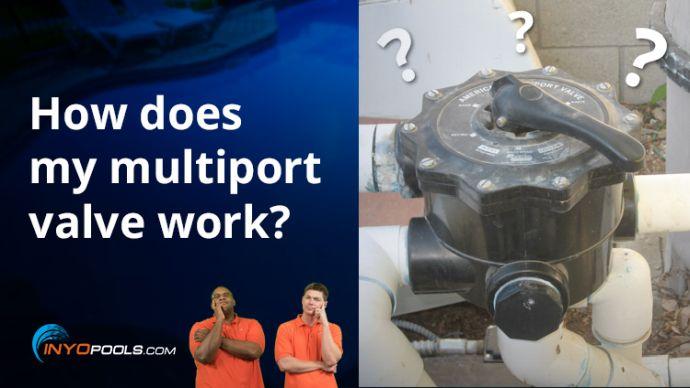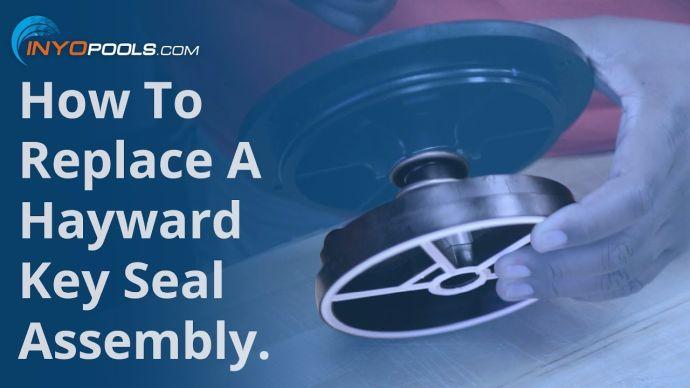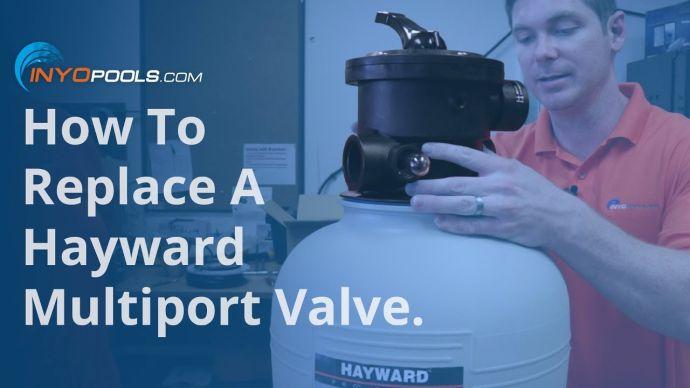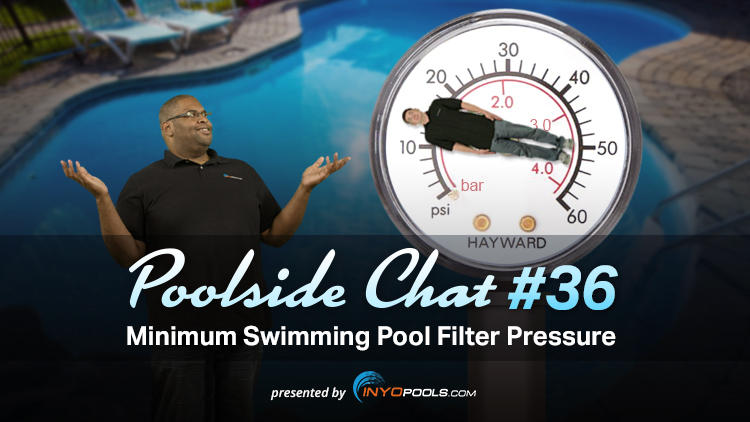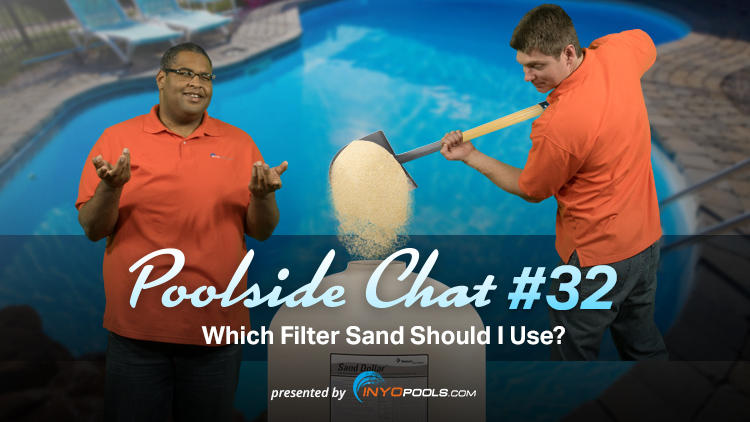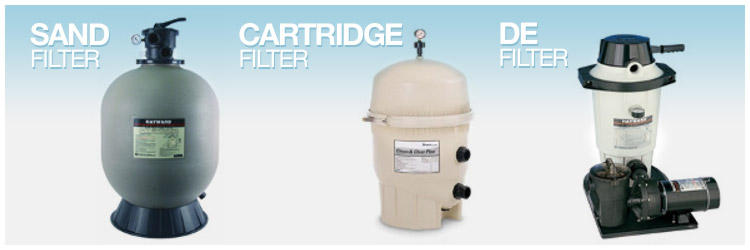
Pool Filter
Troubleshooting
Resources for fixing your filter problems.

Tip: Keeping your pool filter clean is essential for maintaining clear water and extending the life of your filtration system. Regularly backwash or clean the filter cartridge to remove dirt, oils, and debris, which can clog the system and reduce efficiency. A well-maintained filter helps keep your pool water fresh, reduces strain on the pump, and ensures a healthier swimming environment.
Common Filter Problems
Click on a symptom that you are experiencing…
Filter Pressure Too High
Problem:
High filter pressure can indicate a blockage or restriction in your pool’s circulation system. When pressure rises above the recommended range, it can reduce the filter’s efficiency, strain the pump, and ultimately lead to equipment damage. Common causes include a dirty filter, clogged lines, or closed valves.
Action Items:
- Backwash or Clean the Filter: If you have a sand or DE filter, backwash it to remove trapped debris. For cartridge filters, remove and rinse or replace the cartridge as needed.
- Check for Obstructions: Inspect the pool’s skimmer basket, pump basket, and any other areas where debris might collect. Clearing these areas can help improve water flow and reduce pressure.
- Inspect Valves and Plumbing: Make sure all valves are open and operating correctly. Closed or partially closed valves can restrict water flow, increasing pressure.
- Replace Filter Media if Needed: Over time, sand, DE powder, or cartridges can become clogged beyond cleaning. If backwashing or rinsing doesn’t reduce the pressure, it may be time to replace the filter media.
Filter Pressure Too Low
Problem:
Low filter pressure typically indicates an issue with water flow in your pool’s filtration system. When pressure drops below the recommended level, it may signal problems like air leaks, clogged or blocked pipes, or a malfunctioning pump. Low pressure can reduce the effectiveness of filtration, potentially impacting water quality.
Action Items:
- Check for Air Leaks: Inspect the pump lid and fittings for any visible air leaks. Air entering the system can reduce pressure. Make sure the pump lid O-ring is intact, clean, and properly lubricated, and that the lid is tightened securely.
- Clear Skimmer and Pump Baskets: A clogged skimmer or pump basket can restrict water flow, causing low pressure. Empty and clean both baskets to ensure they aren’t blocked by debris.
- Inspect for Blockages in Plumbing: Check for any obstructions in the suction lines, such as debris stuck in pipes leading from the skimmer or main drain. If you suspect a blockage, a plumber’s snake or a pool-specific line cleaning tool can help clear the line.
- Verify Pump Operation: Low pressure can also result from an underperforming or malfunctioning pump. Check that the pump is working at the correct speed (if it’s a variable-speed pump) and that it isn’t in need of maintenance.
Sand or DE Leaking into Pool
Problem:
If you notice sand or diatomaceous earth (DE) in your pool water, it indicates a problem with the filter. Sand or DE should remain inside the filter and not escape into the pool. This issue is typically caused by a damaged filter grid, broken lateral, or a malfunctioning multiport valve.
Action Items:
- Inspect the Filter Grids (DE Filters): If you’re using a DE filter, check the filter grids for any tears or holes. Over time, these grids can wear out and allow DE to pass through into the pool. Replace any damaged grids.
- Check the Laterals (Sand Filters): In sand filters, the laterals at the bottom of the filter can become cracked or broken, allowing sand to escape into the pool. Inspect the laterals for damage and replace them if necessary.
- Inspect the Multiport Valve: A malfunctioning multiport valve can allow DE or sand to escape into the pool. Ensure that the valve is operating correctly and that all the seals are intact. If there is a problem, replacing the valve may be necessary.
- Replace the Filter Media: If your sand or DE filter is older and has been in use for several seasons, the media itself could be degraded. Replacing the filter media (sand or DE powder) will help restore optimal filtration.
- Perform a Rinse after Backwash: Performing a rinse after a backwash can help clear out excess debris left in a multiport valve that may enter back into the pool.
Leaking Water
Problem:
If you see water leaking from your pool filter, it can lead to poor filtration, water loss, and even damage to the filter system. Leaks are often caused by worn gaskets, cracked filter tanks, or loose fittings. Identifying and fixing the leak source promptly can prevent further damage.
Action Items:
- Check O-Rings and Gaskets: Over time, the O-rings and gaskets in your filter can dry out, crack, or become brittle, leading to leaks. Inspect these parts carefully and replace any that show signs of wear.
- Inspect the Filter Housing for Cracks: Filter housings, especially older or plastic ones, can develop cracks from wear or cold weather. If the housing is cracked, replacing it may be the only solution.
- Examine Connections and Fittings: Loose or improperly connected fittings on the filter can also cause water leakage. Tighten all connections to ensure a secure fit, and check that the Teflon tape on threads is still effective.
- Inspect the Filter Drain Plug: The drain plug at the bottom of your filter can be a common spot for leaks if it’s not sealed properly. Make sure it’s tightened and that the O-ring or gasket in the drain plug is intact.
- Check the Multiport Valve: If you’re using a multiport valve, check it for leaks around the seams and handle. Replace the valve gasket if you notice any leaking in this area.
Frequent Backwashing Needed
Problem:
If your pool filter requires frequent backwashing, it could indicate an underlying issue with your filtration system or pool water. While some backwashing is necessary, needing it more often than usual can lead to wasted water, decreased filtration efficiency, and strain on the system. Addressing the root causes can help improve the filter’s performance and reduce the need for frequent backwashing.
Action Items:
- Excessive Debris or Dirt in Pool: High debris levels in the water (from environmental factors or heavy pool use) can clog the filter more quickly, leading to frequent backwashing. Use a skimmer and vacuum regularly to reduce dirt entering the filter.
- Inadequate Pump Run Time: Running your pump for too short a period can prevent the filter from thoroughly cleaning the water. Aim to run your pump for 8–12 hours a day during peak pool season to keep water circulating and filter loads balanced.
- Incorrect Filter Media Level: If you have a sand or DE filter, an incorrect amount of media can impede filtration. Check the media level in your filter; for sand filters, this means ensuring the sand is filled to the manufacturer’s recommended level. For DE filters, follow guidelines for adding the right DE powder amount after each backwash.
- Undersized Filter for Pool Size: A filter that is too small for your pool volume can struggle to keep the water clean, leading to quicker buildup and more frequent backwashing. If you find this to be the case, consider upgrading to a larger filter for more efficient operation.
- Filter Media Needs Replacement: Over time, filter media (sand, DE powder, or cartridges) become less effective. Sand should be replaced every 3–5 years, DE grids inspected annually, and cartridges cleaned and replaced as needed. Old media can clog quickly, resulting in frequent backwashing.

